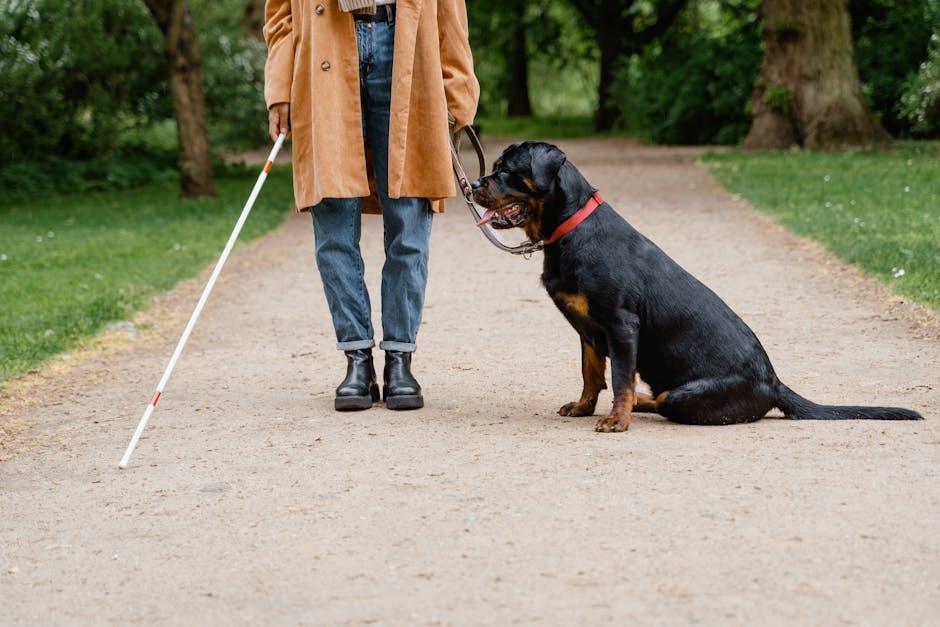Welcoming visitors into your home should be a pleasant experience for everyone, including your furry friend. However, if your dog tends to become overly excited or anxious around guests, it can turn these occasions into stressful situations. Training your dog to remain calm when visitors arrive is not only beneficial for maintaining a peaceful household, but it also enhances your dog’s social skills and confidence. In this article, we will guide you through practical steps and compassionate techniques to help your canine companion greet guests with poise and ease. Whether you’re a seasoned pet owner or a new dog parent, these strategies will foster a more harmonious environment, ensuring that both your visitors and your beloved pet feel comfortable and welcome.
Creating a Peaceful Environment for Your Dog
To help your furry friend remain calm when guests arrive, start by creating a designated safe space where they can retreat if they feel overwhelmed. This could be a cozy corner with their favorite blanket or a quiet room with a few toys. Gradually introduce your dog to the idea that visitors are a positive experience by associating them with treats and praise. When the doorbell rings, give your dog a treat and command them to sit or stay in their safe space. This encourages them to associate the sound of the doorbell with something positive, reducing anxiety.
- Practice controlled greetings: Invite a friend over for a training session. Keep your dog on a leash and ask your friend to enter calmly. Reward your dog for staying relaxed and sitting down.
- Gradual exposure: Start with short visits and gradually increase the duration as your dog becomes more comfortable.
- Use calming aids: Consider using products like calming sprays or anxiety wraps to help soothe your dog during initial training phases.
Consistency is key. Regular practice and patience will help your dog understand that visitors are not a threat and that their presence can be a pleasant part of their day.
Building Trust and Confidence with Positive Reinforcement
One of the most effective ways to foster a calm demeanor in your dog when guests arrive is through the use of positive reinforcement. This approach not only helps in modifying behavior but also strengthens the bond between you and your furry friend. When your dog displays calm behavior as visitors approach, reward them with a treat, praise, or a favorite toy. This creates a positive association with the presence of new people, gradually reducing anxiety and excitement.
- Start Small: Begin by introducing your dog to just one visitor at a time to prevent overwhelming them.
- Stay Consistent: Ensure everyone in the household uses the same commands and rewards to avoid confusion.
- Use a Command: Establish a simple command like “calm” or “relax” to signal the behavior you desire.
- Be Patient: Understand that change takes time, and progress might be gradual. Celebrate small victories!
With persistence and kindness, your dog will soon associate visitors with positive experiences, leading to a more relaxed and welcoming atmosphere whenever the doorbell rings.

Introducing Your Dog to Visitors Gradually
When it comes to helping your furry friend feel comfortable around new people, patience and a structured approach are key. Start by creating a calm environment for introductions. Before your guests arrive, take your dog for a walk to expend some energy. This can help them be more relaxed. Once home, have a special area where your dog can retreat if they feel overwhelmed. This could be a cozy corner with their favorite blanket or toy.
To gradually introduce your dog to visitors, follow these steps:
- Initial Introduction: Keep your dog on a leash when the visitor arrives, allowing them to observe from a safe distance.
- Positive Reinforcement: Reward your dog with treats and praise for calm behavior. This will help them associate visitors with positive experiences.
- Controlled Interaction: Allow your dog to approach the visitor at their own pace. Encourage guests to offer treats or toys to create a positive connection.
- Monitor Stress Levels: Watch for signs of stress or discomfort in your dog, and give them breaks if needed.
By taking these steps, you can foster a positive relationship between your dog and your visitors, helping them to become more relaxed and confident in social settings.

Maintaining Consistency and Patience in Training
Training your dog to remain calm around visitors requires a steadfast commitment to both consistency and patience. It’s crucial to establish a routine that reinforces calm behavior, ensuring your furry friend knows exactly what to expect when guests arrive. Start by setting clear boundaries and consistently using the same commands. For instance, if you use the command “place” to direct your dog to a specific spot during visits, make sure to use it every time a visitor comes over. This repetition helps your dog understand what behavior is expected and reduces anxiety or excitement.
- Practice regularly: Short, frequent training sessions can be more effective than sporadic, lengthy ones.
- Reward calm behavior: Use treats or praise to reinforce moments of calmness, especially when visitors are present.
- Stay patient: Remember, every dog learns at their own pace. Celebrate small victories and progress.
Maintaining a calm demeanor yourself is equally important. Dogs often mirror the energy of their owners, so exude calmness to help guide your pet. Patience is key; transforming an excitable greeter into a serene host takes time, but with consistent effort, your dog will soon learn to welcome guests with tranquility.

